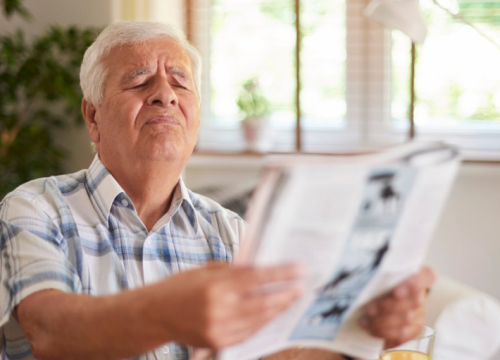Posture and PD
Parkinson’s affects control of automatic activities, so posture changes may occur without the brain’s automatic reminders to stand up straight. These changes may include stooped or rounded shoulders, decreased low back curve, or forward lean of the head or whole body. Muscle stiffness/rigidity can also contribute to changing posture. You may notice that your posture changes when your medications aren’t working as well or when you have been in one position for too long. If you are concentrating on another activity (like walking or working at the computer), you may also notice a change in posture.
Why is it important to monitor my posture?
Neck or back pain can occur when natural spine curves are out of alignment. Stooped posture reduces your ability to take deep breaths, which can affect your communication skills. Stooped posture also reduces eye contact. Loss of flexibility from changing posture can cause difficulty when raising arms overhead, rising from a chair, etc.
How do I maintain good posture?
Use a mirror to check posture (both front and side views) throughout the day. Be aware of posture changes. Try to catch yourself stooping or leaning and take action to make corrections. Ask people to tell you if they notice you stooping. Change position often. Take movement breaks! Get back (lumbar) or neck (cervial) rolls or cushions for better postural alignment when sitting. Consider yoga or tai chi classes. Seek a physical therapy referral for specific posture recommendations and treatment. Perform simple posture exercises/ stretches throughout the day.
Posture Exercises
- Posture check: Press your body up against the wall with your heels 6” away. Tuck your chin, then slowly lift it to look straight ahead. Pull in your stomach muscles and bring your lower back closer to the wall. Lift your chest, bringing your shoulders back and down. Walk away and try to maintain this position.
- Standing back line-up: Stand with your back to the wall. Place your arms out against the wall. Make yourself look like a giant “T” with your palms flat to the wall. Press your hips, low back, shoulders, head, elbows and hands to the wall. Now push against the wall with your hands as hard as you can for 10 seconds. Repeat this activity with palms facing down, palms out and palms up.
- Standing shoulder stretch: Stand with your back to the wall. Raise your arms above your head, then bend your elbows to 90 degrees. Press your arms into the wall, palms facing out. Press your entire body to the wall. Move both arms up the wall over your head as far as you can go, keeping elbows tight to the wall. Return your arms to starting position. Repeat this movement 5 times.
- Arm circles: Stand away from the wall, place arms in the giant “T” position, palms facing forward. Pinch your shoulder blades together and stand tall. Move arms forward in a circular motion; make small, medium and large circles. Repeat each circle 2 - 5 times. Move arms backward and repeat for each circle size. Repeat circle exercises with palms down, palms up and palms back.
Tips
Good posture is critical to good balance. When the body is correctly aligned, movement is more efficient and more stable. To establish good posture:
- Stand with your back against the wall, feet flat on the floor with the heels approximately 3 to 4 inches or less from the wall.
- Hold your head erect with the chin parallel to the floor, vision focused on a target at eye level.
- Relax the arms and shoulders.
- The buttocks, shoulder blades and, if possible, the back of the head should be touching the wall. Focus on keeping chin parallel with the floor and the eyes focused on the target.
- Make sure the weight is evenly distributed throughout the whole foot, front to back and side to side, with all the toes on the floor helping with balance.
Related Materials
Related Blog Posts

A Possible New Gait Way: Spinal Cord Stimulation

Walking with Parkinson’s: Freezing, Balance and Falls
